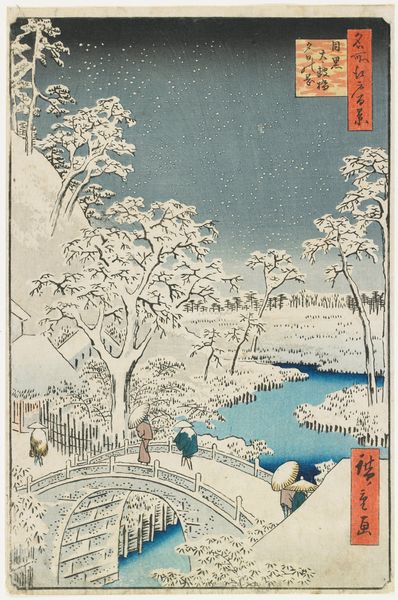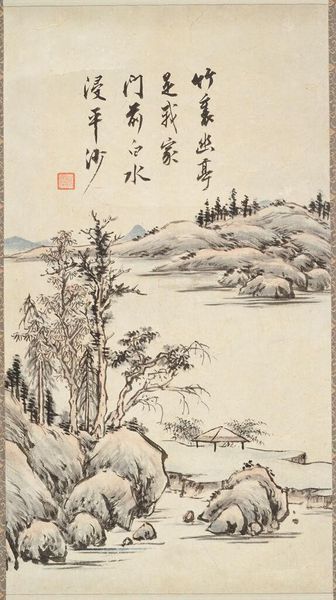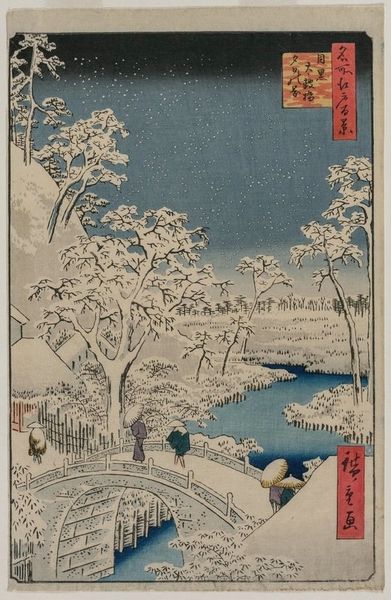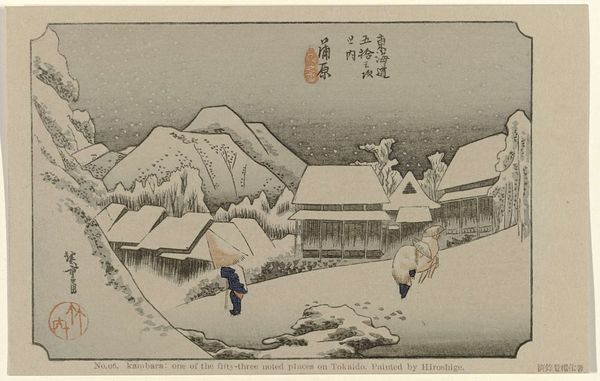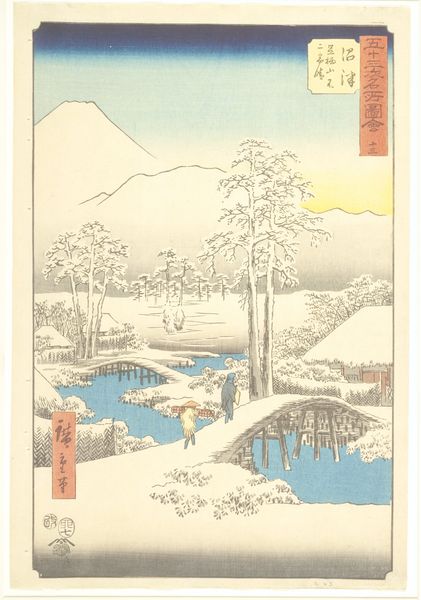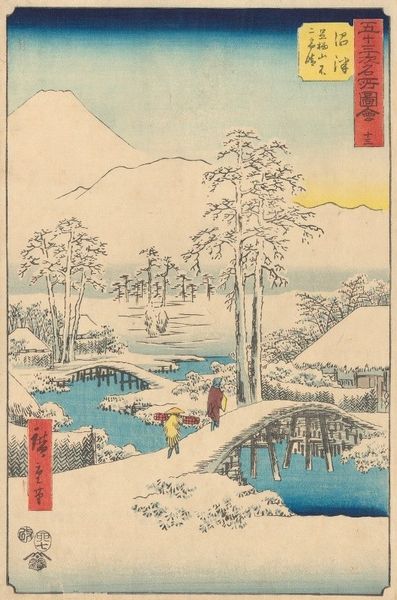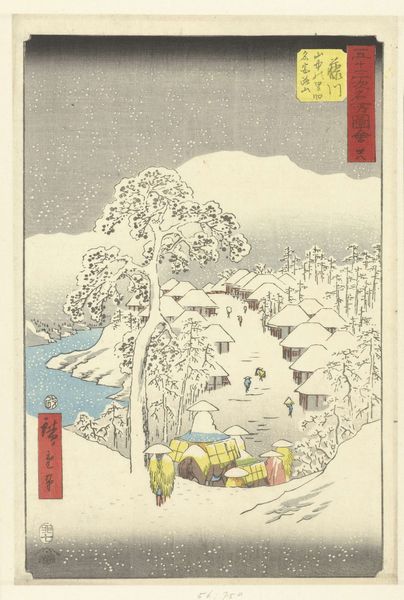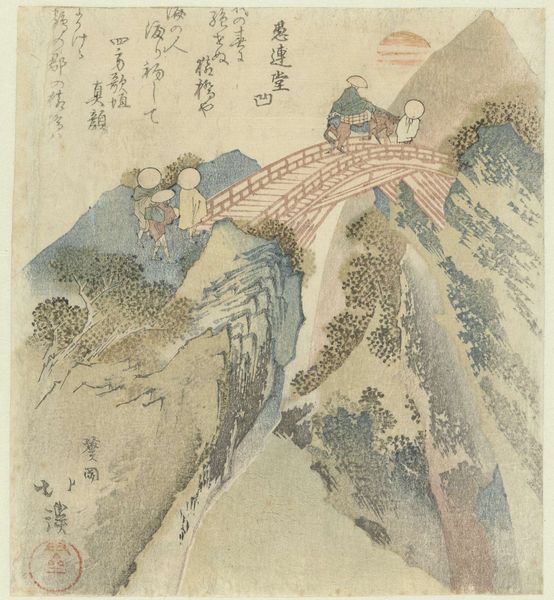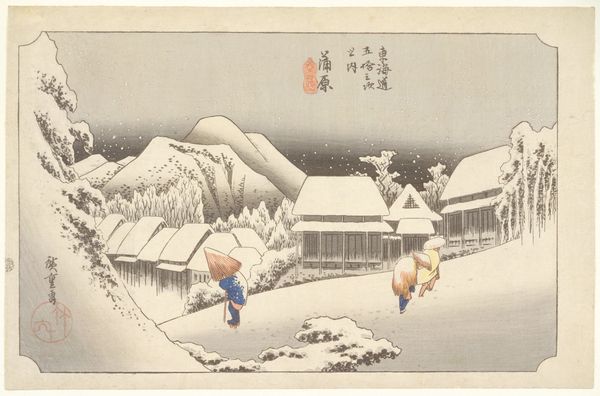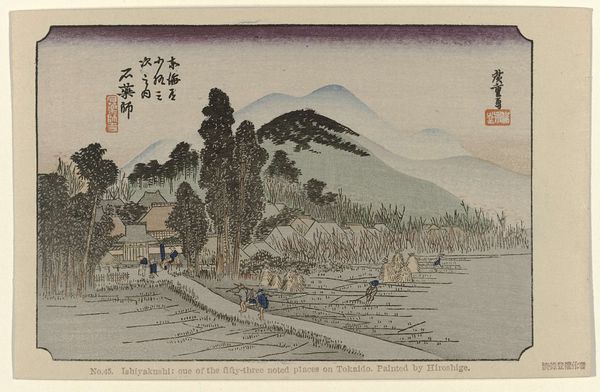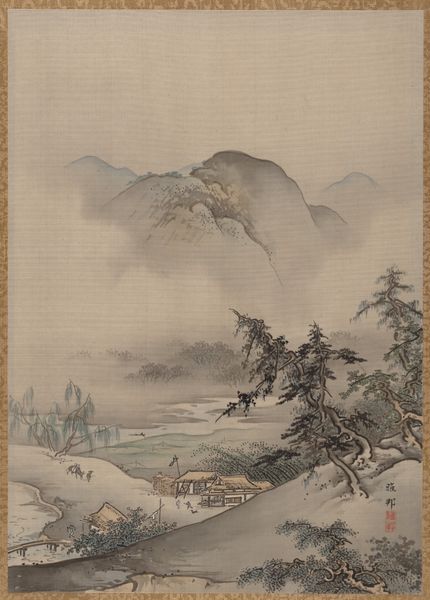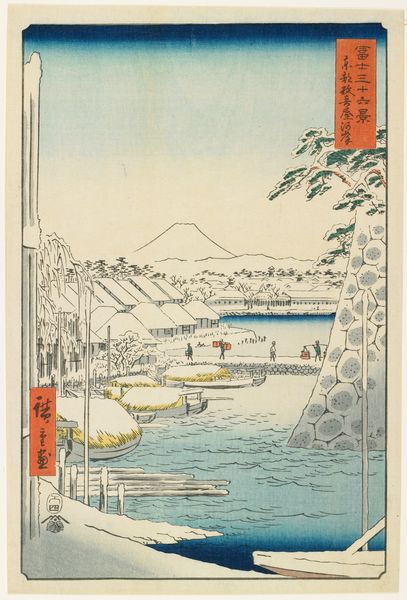
drawing, print, ink, woodcut
#
drawing
# print
#
asian-art
#
landscape
#
ukiyo-e
#
ink
#
coloured pencil
#
woodcut
#
line
#
northern-renaissance
Dimensions: 13 7/16 × 9 in. (34.2 × 22.8 cm) (image, vertical ōban)
Copyright: Public Domain
Editor: This is Utagawa Hiroshige’s “Mount Haruna in Snow,” possibly created between 1853 and 1858. It's a woodblock print, a medium I always find fascinating. There's a sense of quiet isolation to this image; it's beautiful, but also makes me think about the labor that went into making this. What jumps out at you about it? Curator: What strikes me is how Hiroshige mediates our experience of the mountain. Think about the labor involved – the carving of the woodblocks, the precise registration of color. Each line, each plane, a product of skilled craft. Does this elevation of craft challenge traditional hierarchies of art, in your opinion? Editor: Definitely. The meticulous carving required subverts any simple separation of “art” and “craft.” It makes me think about the social context of the work - were the craftsmen viewed differently from the artist himself? Curator: That’s precisely the question. Woodblock printing in the Ukiyo-e tradition involved a division of labor: the artist, the carver, the printer, all contributing to the final product. The economic system propped it up. Consider the demand for these prints and how it fueled this mode of artistic production. This wasn't art made in a vacuum; it was responding to market demands, impacting consumption. Editor: So, the image isn’t just depicting a snowy mountain; it’s evidence of a whole production system and consumer culture. The beautiful scenery becomes a kind of commodity. Curator: Exactly. And what about the consumption of the materials, where did that timber come from? Whose labor was involved in the sourcing and processing? Can a landscape be innocent of economic influence? Editor: Wow, I hadn't thought of it that way. Now I see so many layers of production that are literally beneath the surface. It's not just a picture, but a material artifact tied to a specific place and time. Curator: Precisely! It’s in understanding the means of its production and the social conditions that made it possible, we enrich our interpretation.
Comments
No comments
Be the first to comment and join the conversation on the ultimate creative platform.
